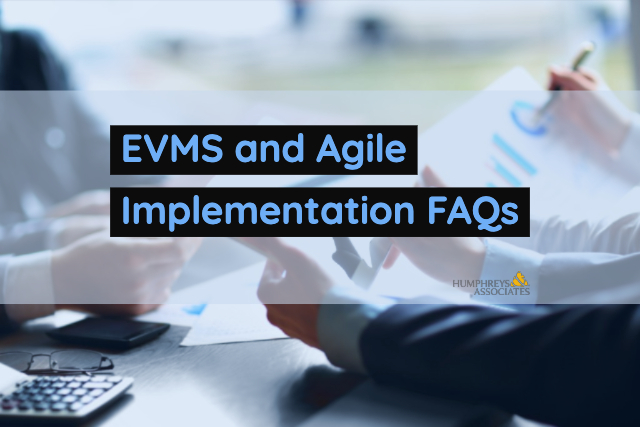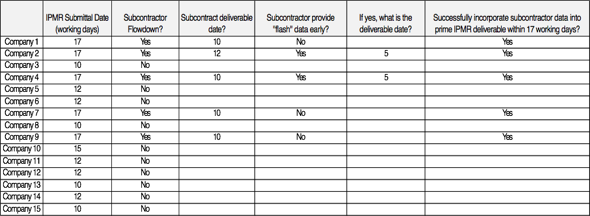Hiring the Right EVM Professional

EVM Hiring, Not Selling
You are searching for the right person to fill that critical EVM program management or project controls position on one of your newer or one of your tough projects. So, what does the interview sound like? Probably like so many I have witnessed. But there is a much better way to conduct the interview and get the right person.
Many of the interviews I have participated in consisted largely of the interviewer telling the potential candidate about the position, about the company, and almost making the interview a selling situation. It sometimes seemed like the theme was “How can we convince this person to come on board?”
Always Clarify
Of course, some time in the interview must be spent explaining the situation to the candidate’s satisfaction. You would not want to make an offer to someone only to have them come back at you expressing confusion about the position or the project. That happened to me years ago. I was interviewing with a major computer firm for the position of “program manager.” Obviously, the ad I answered, and the screening process were flawed. I arrived at the interview and within a few minutes the interviewing manager was commenting on the fact I had no software programming experience. They were looking for a manager for a software development (programming) effort. They did not even understand the term program manager as it related to project management. We agreed to end the interview on good terms although I am sure we both realized we had wasted a lot of time.
Often an interviewer will focus on the certifications the interviewee has achieved. If the person is a PMP from the PMI, that is a good thing. But more than once I have met and worked with people who are certified and credentialed, but who really have no earned value training and cannot get the job done in the real world. Be careful and dig deeper. The right interview can help do that for you.
Can They Get the Job Done?
But the most frequent observation I have made about a defective interview process is the failure to verify that the candidate can do the job. The best illustration of this is from the book “Peopleware” by Tom DeMarco and Timothy Lister. The example is in Chapter 16 and is called “Hiring a Juggler.” It presents the story of the hiring manager, it was the circus manager, asking a lot of questions about other circuses the juggler has worked for, the things the juggler can juggle, how many things can he keep in the air at one time, and so on. At the end of the interview, the manager is satisfied he has found his new juggler and offers him the job. The surprised juggler asks one question only, “Don’t you want to see me juggle?”
At H&A, when we are looking at new individuals for our scheduling practice, we actually give them a test. They are provided a written description of an interview with a CAM in which the CAM explains what is supposed to happen in his or her control account. From that written discussion, the interviewees are asked to get into the scheduling software with which they are proficient and build the plan described by the CAM. With that plan, they are asked to determine the end date, locate the critical path, and otherwise verify that the schedule is a high-quality schedule. In other words, we ask our interviewees to show us they can juggle.
EVM Expert Questions
So what kinds of things would you want to talk about in an interview for a project manager candidate, an EVMS candidate, or a scheduling candidate? What direction could you take in the interview that would be more oriented to seeing if the person can juggle? How about some of these questions? Or at least how about the general direction of these questions?
Question List
- In your opinion, who are the stakeholders for the project WBS?
- What are the pitfalls that you would encounter while building the right WBS? How can they impact your project?
- Tell me about the System Engineering Technical Review (SETR) process and how that would be part of your project?
- How would you assess whether the amount of Management Reserve withheld on your project was the right amount?
- What, from your experience, do you think is the single biggest project-killing issue, and how would you prevent or minimize it on your project?
- In addition to that issue, what are three more serious potential problems that can cause failure?
- What is total float (total slack) and how would you use that as a manager of a project?
- What is a “driving path” and why would that be important to you on your project?
- How would you evaluate a control account EAC on your project?
- When you issue ground rules for developing a new project plan, what confidence level do you set for duration estimates and cost estimates from your teams?
- What process would you recommend for developing the project-level best case, worst case, and most likely EACs?
- From your point of view, what are the main duties of a control account manager?
- What are some measures of cost and schedule performance-to-date in a control account and what do they mean to you as a manager?
- When a control account has a CPI (cumulative) of .75, and SPI (cumulative) of 1.1, and a VAC of -20%, what does it mean?
- What are some of the Generally Accepted Scheduling Principles (GASP)?
- What is TCPI and what do you use it for?
- Can you explain some of the key measures in a project schedule that you can use to assess its quality?
- Please explain how a Schedule Risk Assessment is conducted and how the results are used.
- What professional organizations do you belong to?
- What is the last book you read about project management?
Extend
Now that you have had a chance to think about those questions, undoubtedly others have come to mind. An interview with the give-and-take generated from discussing a list of questions like those would be very revealing. At the end of that interview you should know if the interviewee can juggle. You will know where they have good understanding and where they might not be ready.
Does the interviewee have to be exactly right on every topic? Not at all. But the answers and the discussion can help you assess how much development is still needed for this candidate to be able to shine in the open position you are trying to fill. Not everyone knows everything. Experience is a great teacher, but it comes from the situations where the interviewee has been directly exposed. Or perhaps from their leaning.
Take a moment and think about the interviewing practices at your company. Are they like the ones we just discussed? Can they be improved? Where are they weak? Where are they strong?
Hiring the Right EVM Professional Read Post »






